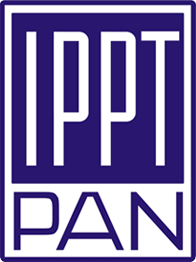Potential Applications of Ultrasonic Parametric Array Loudspeakers (PALs) in Room Acoustic Measurements
Abstract
In this paper, the potential use of parametric array loudspeakers (PALs) in acoustic measurements of the room is analysed, especially in the assessment of the effectiveness of reflective panels and intentionally angled surfaces. PALs are sound sources capable of emitting highly directional acoustic beams within the audible frequency range. Their operation is based on the emission of a high-frequency (ultrasonic) carrier modulated so that, through nonlinear demodulation in air, audible sound is generated. This process results in a narrow, focused sound beam, enabling precise acoustic emission. To explore PALs potential for acoustic measurement applications, the propagation behaviour of PAL-generated signals is first investigated under free-field conditions, focusing on how different surface types influence sound reflection. Subsequent experiments are carried out in a controlled indoor space, where impulse responses are recorded for various beam incidence angles and receiver positions. The collected data are used to generate sound-level distribution maps, allowing for the visualization and quantification of reflected sound coverage areas. The results show that PALs produce beams with substantially reduced lateral dispersion compared to conventional loudspeakers, enabling precise identification of reflection points and incidence angles. This directional precision makes it possible to accurately assess how effectively the reflective acoustic elements and structures shape the sound field within the room. Overall, these findings may contribute to optimising sound design in acoustically complex environments.
Keywords:
parametric array loudspeakers (PALs), room acoustics, ultrasonic, reflection, directivityReferences
- Bennett M.B., Blackstock D.T. (1975), Parametric array in air, Journal of the Acoustical Society of America, 57(3): 562–568, https://doi.org/10.1121/1.380484.
- Berktay H.O. (1965), Possible exploitation of nonlinear acoustics in underwater transmitting applications, Journal of Sound and Vibration, 2(4): 435–461, https://doi.org/10.1016/0022-460X(65)90122-7.
- Gallien A., Prawda K., Schlecht S. (2024), Matching early reflections of simulated and measured RIRs by applying sound-source directivity filters, [in:] Audio Engineering Society Conference: AES 2024 International Acoustics & Sound Reinforcement Conference, https://aes2.org/publications/elibrary-page/?id=22373.
- Gan W.-S., Yang J., Kamakura T. (2012a), Parametric acoustic array: Theory, advancement, and applications, Applied Acoustics, 73(12): 1209–1210, https://doi.org/10.1016/j.apacoust.2012.06.016.
- Gan W.-S., Yang J., Kamakura T. (2012b), A review of parametric acoustic array in air, Applied Acoustics, 73(12): 1211–1219, https://doi.org/10.1016/j.apacoust.2012.04.001.
- Geroldinger A., Lusa L., Nold M., Heinze G. (2023), Leave-one-out cross-validation, penalization, and differential bias of some prediction model performance measures – A simulation study, Diagnostic and Prognostic Research, 7: 9, https://doi.org/10.1186/s41512-023-00146-0.
- Ju H.S., Kim Y.-H. (2010), Near-field characteristics of the parametric loudspeaker using ultrasonic transducers, Applied Acoustics, 71(9): 793–800, https://doi.org/10.1016/j.apacoust.2010.04.004.
- Keele Jr. D.B. (2016), Design of free-standing constant beamwidth transducer (CBT) loudspeaker line arrays for sound reinforcement, Journal of the Audio Engineering Society, https://aes2.org/publications/elibrary-page/?id=18428.
- Login D. (2015), A new approach to loudspeaker measurements, Klippel GmbH, https://www.klippel.de/uploads/media/Logan_Klippel_Near_Field_Scanner_2015.pdf. (access: 20.07.2025).
- Lumumba V.W., Kiprotich D., Mpaine M.L., Makena N.G., Kavita M.D. (2024), Comparative analysis of cross-validation techniques: LOOCV, k-folds cross-validation, and repeated k-folds cross-validation in machine learning models, American Journal of Theoretical and Applied Statistics, 13(5): 127–137, https://doi.org/10.11648/j.ajtas.20241305.13.
- Rakerd B., Hunter E.J., Berardi M., Bottalico P. (2018), Assessing the acoustic characteristics of rooms: A tutorial with examples, Perspectives of the ASHA Special Interest Groups, 3(19): 8–24, https://doi.org/10.1044/persp3.SIG19.8.
- Tervo S., Pätynen J., Lokki T. (2009), Acoustic reflection path tracing using a highly directional loudspeaker, [in:] 2009 IEEE Workshop on Applications of Signal Processing to Audio and Acoustics, pp. 245–248, https://doi.org/10.1109/ASPAA.2009.5346530.
- Videotel Digital (2014), HyperSound® HSS 3000 mono/stereo system directional audio speakers, Turtle Beach Corporation, https://cdn.shopify.com/s/files/1/0260/5894/8671/files/HyperSound_Owners_Manual.pdf?v=1588116815. (access: 20.07.2025).
- Vuine F. (2024), Loudspeaker, European Patent Office, Patent number EP4122215B1.
- Westervelt P.J. (1963), Parametric acoustic array, Journal of the Acoustical Society of America, 35(4): 535–537, https://doi.org/10.1121/1.1918525.
- Yoneyama M., Fujimoto J.I., Kawamo Y., Sasabe Y. (1983), The audio spotlight: An application of nonlinear interaction of sound waves to a new type of loudspeaker design, Journal of the Acoustical Society of America, 73(5): 1532–1536, https://doi.org/10.1121/1.389414.







